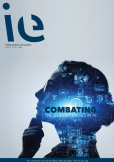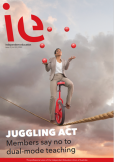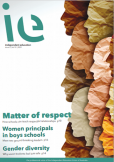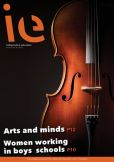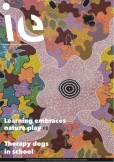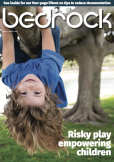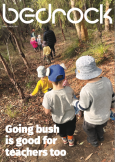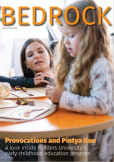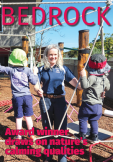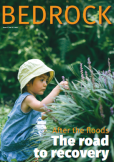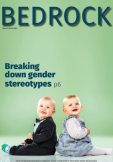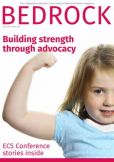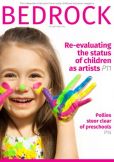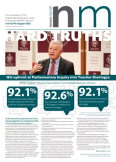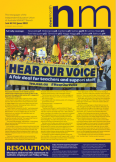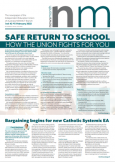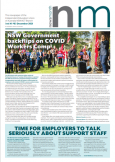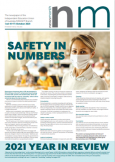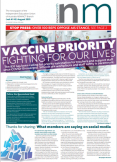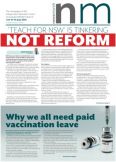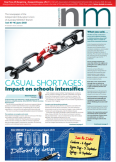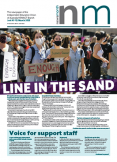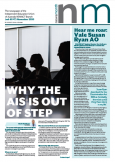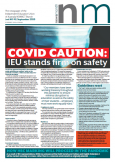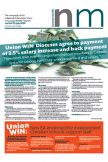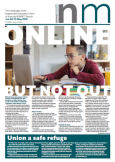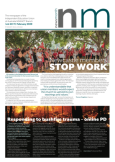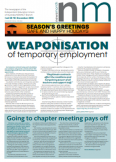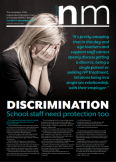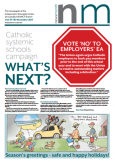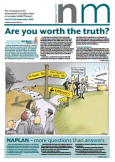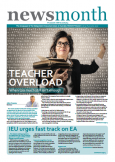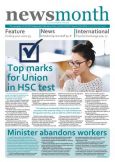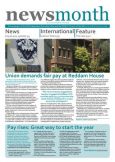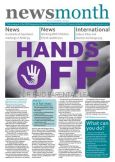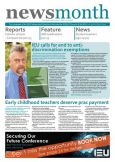New technologies create ethical grey areas but, in education, one thing is black and white: cyberbullying of staff must be taken seriously, writes Will Brodie.
Cyberbullying is online harassment. It is bullying using digital technologies including mobile phones, email and social media. It includes:
- nasty text messages or offensive emails or spreading damaging rumours
- setting up websites to attack an individual
- anonymous, mocking or threatening phone calls
- publishing online someone’s private, personal or embarrassing information without permission
- assuming someone’s identity online and representing them negatively to damage their reputation or relationships
- creating hate sites or implementing social exclusion campaigns on social networks, and
- forwarding or sharing embarrassing images without consent.
Cyberbullying is extremely damaging because it is invasive, difficult to escape and can happen at any time. Harmful material can be widely and rapidly shared to a large audience on public forums or by being sent to many people at once. It can stay harmful long after the initial harassment has ceased.
Cyberbullying has long been a concern in schools, but with the advent of publicly accessible generative artificial intelligence (AI) in the past two years, students are increasingly using it against teachers.
In June, Guardian Australia reported that Australia’s eSafety Commission was receiving 175 reports of online ‘sextortion’ and revenge porn a week.
The Age has reported that an estimated 95,820 deepfake videos were online in 2023, and that this was “550 per cent more than in 2019”.
What is a ‘deepfake’?
A deepfake is an image or video in which a person’s face or body has been altered to make it appear like they’re doing or saying something that never happened. Earlier this year, researchers defined deepfakes as “AI-generated image-based sexual abuse”.
In October 2023, Australia’s eSafety office warned schools to overhaul their safety policies because deepfakes were coming.
This year they have proliferated.
In one instance, a boy was expelled from a Melbourne Catholic school after he created fake sexual images of a female teacher that were circulated throughout the school.
However, such firm action is unfortunately the exception.
IEU organisers hear many stories about cyberbullying that don’t make the media and are not met with appropriate action by schools.
At another Victorian boys’ school, a group of students was caught creating pornographic images of staff. The perpetrators were briefly suspended and told they could not bring smartphones to class.
But when they returned to lessons, they defied the smartphone ban without penalty. Then friends of the perpetrators physically harassed staff who had spoken out about the misbehaviour.
Accountability is essential
Lack of accountability creates a learning environment that can exacerbate bullying behaviour towards both staff and students.
Many teachers throughout Australia have had their image violated or reputation smeared by vindictive students on social media.
As IEU Victoria Tasmania General Secretary David Brear said in response to the recent ‘deepfake’ exploitation of a member: “Schools must make it an immediate priority to educate students about the responsible, lawful use of AI and social media.
“Students must be made aware that this sort of vile behaviour is criminal and that it will be reported to police. These discussions should take place as part of a broader discussion around respect for others – in particular respect for women.”
IEUA Federal Secretary Brad Hayes says women members around the nation have experienced “disgusting verbal, and even physical, attacks and intimidation” and are reporting “increased examples of inappropriate behaviour seemingly fuelled by online ‘anti-feminist’ activists”.
This network of online misogynist influencers has been dubbed the ‘manosphere’.
Considering solutions
The federal government has brought forward a review of Australia’s online safety laws by a year “in a bid to address new and emerging digital harms”.
However, legal options are often tortuous for victims and don’t address the fundamentals underlying online harassment.
A study from Monash University more directly engages with the plight of educators. Project lead Dr Naomi Pfistner contacted the IEU seeking input from members into a study that will “critically examine and address the influence and impact of the manosphere upon young boys’ and men’s practices of masculinity that are harmful to women, girls and gender diverse people”.
Dr Pfistner told the IEU: “Gender-based violence is a national emergency. It is also preventable, and educators and schools can play a pivotal role in promoting cultural change and ending gender-based violence.
“Sexist and misogynistic discourses expressed in the manosphere are gaining traction in Australian schools.”
Dr Pfistner’s project is “solutions-focused”, working in partnership with educators and young people to “develop a professional learning program to support secondary school teachers to address the influence of the manosphere in schools”.
Nothing less than “social change” is required to address gender-based violence, Dr Pfistner says, meaning “comprehensive effort across every setting in our community”.
“This requires work in early childhood with educators and parents to build children’s resilience to rigid gender stereotypes,” Dr Pfistner says.
“And this work needs to continue in adolescents to address the harmful influence of the manosphere and online misogyny on young boys’ and men’s practices of masculinity. To create lasting change, we have to challenge and disrupt traditional gender roles and stereotypes at every age.”
Preventative strategies
Our Watch, an independent, not-for-profit organisation set up to counter gender-based violence, agrees, saying prevention of cyberbullying requires “a holistic approach involving on-the-ground efforts that engage individuals and communities; whole-of-setting approaches in organisations and institutions and change to laws and government policies” .
To help school staff and students in schools, we must use primary prevention, which has been successful in combating public health issues such as smoking and road safety.
Professor Daryl Higgins and Gabrielle Hunt from the Australian Catholic University (ACU) say primary prevention measures recognise that sexual abuse and harassment is a gendered issue.
“Women, girls and gender-diverse individuals are disproportionately affected,” the researchers say. “And men and boys are overwhelmingly more likely to perpetrate these crimes.”
ACU primary prevention recommendations
- Training and resources for staff
Staff need clear policies and procedures on how to respond effectively and report to the relevant authorities when there is sexual harassment, assault or child abuse. - Comprehensive sex education
Sex education needs to include consideration of pornography, sexting and online safety. It can help prevent harmful behaviours by teaching children and young people about healthy relationships, boundaries and informed and enthusiastic consent. - Strong school leadership
Leaders must take a zero-tolerance approach to anything that normalises stereotyping, degrading comments, violence or misogyny. Children in a school should be empowered to raise concerns to adults and know they will be listened to and believed.
Hayes says schools must address misogyny and sexual harassment, but they are “serious issues across our entire society”, and we need parents and the wider community to also call out bad behaviour and mentor positive role models for boys and young men.
Schools alone cannot eradicate sexual harassment. But they have a crucial role to play and it starts with making it clear that cyberbullying of staff will not be tolerated.
References
Deepfake AI pornography is becoming more common – what can parents and schools do to prevent it?, The Conversation, 12 June 2024, bit.ly/3WUrTfp
AI nudes of Victorian students were allegedly shared online. How can schools and students respond to deepfake porn?, The Guardian, 12 June 2024, bit.ly/46SM7e5
‘I think you need to see this’: Celebrities are not the only victims of deepfake porn, The Age, 12 February 2024, bit.ly/3SZDdFM
Our Watch: www.ourwatch.org.au/what-is-primary-prevention
Monash University study: Supporting secondary school teachers to address online spaces as pathways to gender-based violence for boys and men: bit.ly/4cSZ497
Australian Child Maltreatment Study: www.acms.au



